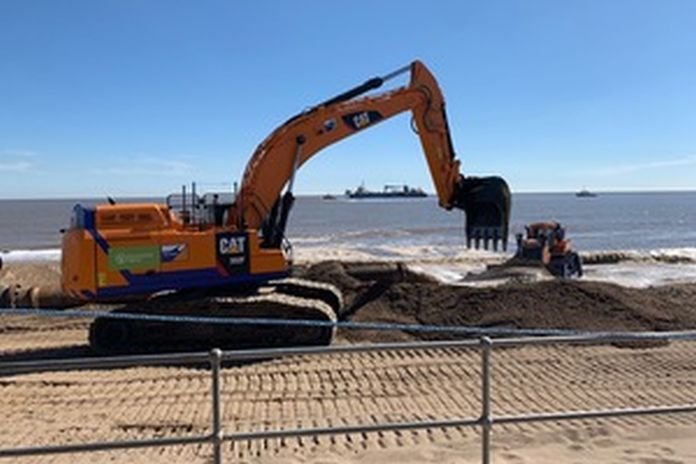LONDON, England – A major annual scheme to replenish Lincolnshire’s beaches will get underway in June 2020, helping reduce the risk of flooding up and down the coast.
The Environment Agency’s £7m beach management scheme sees sand dredged from the seabed and pumped onto the beach to replace levels lost to the sea during the winter.
Replenishing this sand means the beaches – instead of hard defences like sea walls – take the brunt of the waves’ force and energy. This reduces the amount of damage and erosion to those hard defences, which help protect 20,000 homes and businesses, 24,500 static caravans and 35,000 hectares of land from flooding.
Deborah Campbell, east coast flood risk manager for the Environment Agency, said: “This vital work reduces the risk of flooding to homes and businesses on the coast, and we’re delighted it is able to go ahead in line with the government’s coronavirus guidance. All our staff, contractors and partners will practice social distancing and follow Public Health England’s guidance for safe working.
“And as well as helping protect people from flooding, the work will also help maintain our beloved sandy beaches so they’ll be ready to welcome back locals and tourists alike when it’s safe for visitors to return. Meanwhile, while people remain at home, we’d remind you to please sign up for free flood warnings at www.gov.uk/flood to help protect your families if flooding is expected.”
Over the next six weeks, more than 400,000 cubic metres of sand will be pumped back onto beaches between Saltfleet and Gibraltar Point, including Trusthorpe, Mablethorpe, Ingoldmells, Trunch Lane, Wolla Bank, Chapel Six Marshes and Hutoft, and local people who may be visiting their beach are asked to stay clear of the worksites.
The Environment Agency has been restoring sand levels on the Lincolnshire coast each year since 1994, and, while the work continues to be effective, long-term estimates suggest that the impacts of climate change will mean continuing to use sand alone as a method of managing flood risk will not be sustainable.
Therefore, the Environment Agency’s strategy for managing coastal flood risk between Saltfleet and Gibraltar has been under review for a number of years.
A new strategy has been developed, and, based on the results of a public consultation held last year, a number of options for managing the coast in the future have been taken forward. More information on the draft strategy can be found on our Saltfleet to Gibraltar Point and Lincolnshire beach management website.





